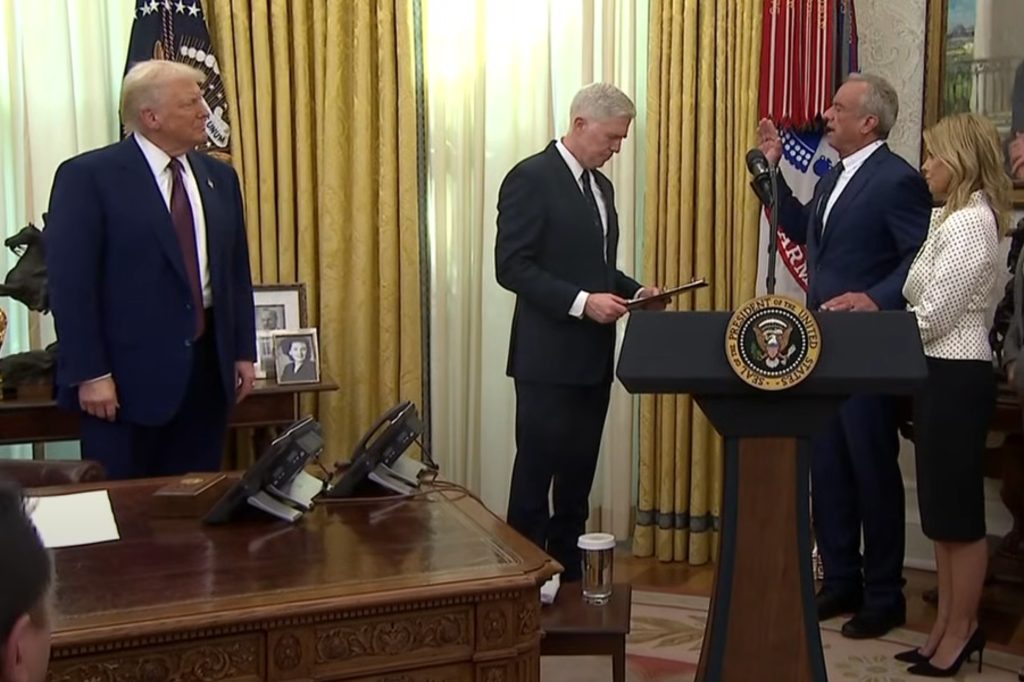Podcast: Play in new window | Download | Embed
Nearly 1,000 Indian Health Service (IHS) layoffs were rescinded Friday, as tribal organizations from across the country advocate to protect the federal workforce serving Indian Country.
The layoffs are part of the Trump administration’s effort to shrink the size of the federal workforce.
More than a dozen tribal organizations sent a letter to the Office of Personnel Management and the administration on Friday, urging for the protection of federal employees serving Indian Country.
The letter raises concerns about what they say would be devastating impacts on essential services in tribal communities, including critical service disruption to healthcare and emergency services, and jobs with ripple effects on local economies.
The groups are calling for full exemptions for employees in the Indian Health Service (IHS), Bureau of Indian Affairs, Bureau of Indian Education, and other federal offices that support tribes.
The National Indian Health Board (NIHB) is among organizations to sign the letter.
The NIHB told Native News Online on Sunday that the IHS layoffs were rescinded “thanks at least in part to advocacy by the many Tribal organizations.”
ICT reports new health secretary Robert F. Kennedy Jr. verbally rescinded the IHS layoffs Friday evening.
Tribal organizations are reminding officials that tribes have unique political status, and the government has trust and treaty obligations.

A patient at the IHS Fort Belknap Hospital in Harlem, Mont. receives a COVID vaccination on April 6, 2021. (Courtesy IHS)
A recent report shows that in rural counties home to large numbers of American Indians, including in Montana, people are more likely to rely on Medicaid for health insurance across all age groups.
Kathleen Shannon has more.
About 23% of Montanans rely on Medicaid for their health coverage. But the four counties with the highest rates – roughly 40% – are all home to American Indian reservations.
That’s according to a report from the Georgetown Center for Children and Families on Medicaid’s role in rural areas.
Executive Director Joan Alker says that’s a national pattern.
“This is important because if Congress moves ahead to make large cuts, these areas and Indian Country more generally will be in big trouble.”
Alker says documents leaked from the House Budget Committee show it’s considering cuts to Medicaid between $200 billion and $2.3 trillion.
She adds the cuts are not a “foregone conclusion.”
Jason Smith, executive director of the Montana Consortium for Urban Indian Health, says Medicaid doesn’t just cover individuals, it also helps reimburse health centers like his.
“I would say the UIOs, particularly, had a lot of revenue coming from Medicaid. So it’s really a great secondary source of funding that has helped their organizations run and provide services for the communities.”
As of January, more than 14,000 American Indians in Montana were enrolled in Medicaid expansion.

A Poetry in the Park event commemorating Missing and Murdered Indigenous Women on May 1, 2024. (Photo: Brian Bull / KLCC)
An effort to improve response to reports of Missing and Murdered Indigenous People (MMIP) in Oregon is underway in the state legislature.
KLCC’s Brian Bull reports.
State Rep. Tawna Sanchez (Shoshone-Bannock, Ute, and Carrizo descent/D-OR) is building on a 2019 MMIP bill she sponsored, that created talking sessions between tribal communities and state agencies, including the Oregon State Police (OSP).
That led to improved training and a tribal liaison in the OSP.
Now Rep. Sanchez has a bill that aims to have Oregon’s nine federally recognized tribes and urban communities partner up with another state agency.
“It’s asking that we put a sort of intervention kind of situation in the Oregon Health Authority. They’ve already got established prevention models that they’ve used, they already have the ability to get out to community. They already have the ability to bring folks into sort of that thought process of, like, ‘How do we fix this?’”
The bill is currently in front of the legislature’s budget-writing committee with an estimated price tag of $500,000 per year.
She’s concerned about whether federal funds could be tapped, given the uncertainty about the future of federal spending.
Get National Native News delivered to your inbox daily. Sign up for our daily newsletter today.



